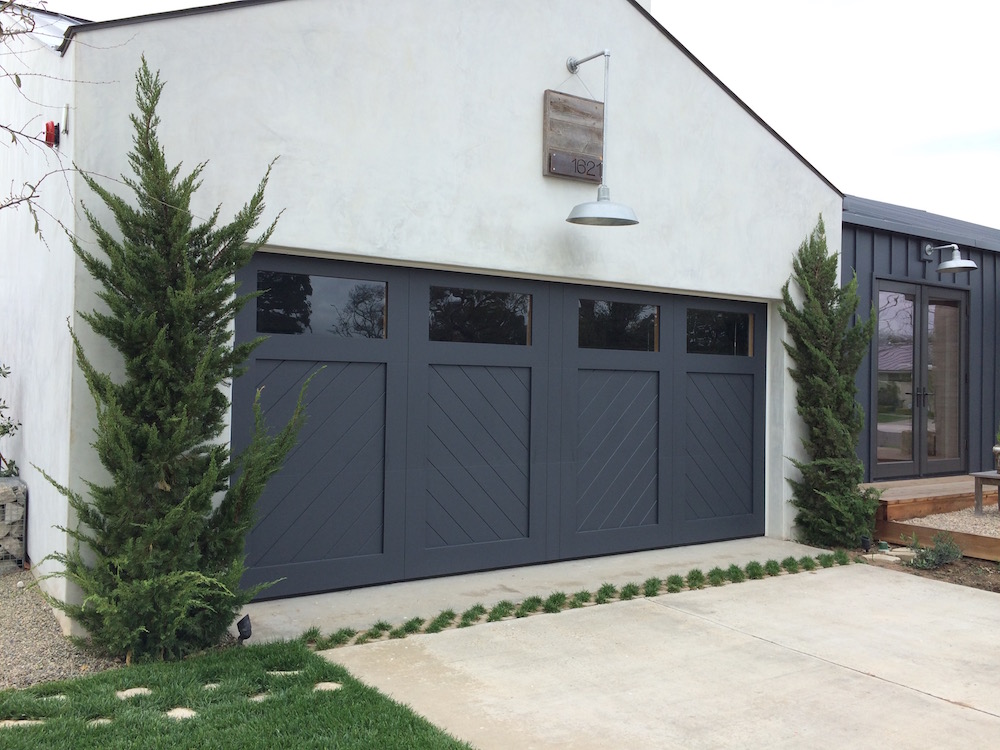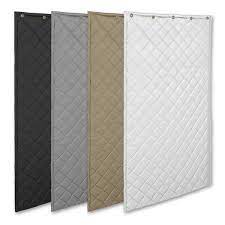How to Soundproof a Steel Door Preventing It from Banging
While closed doors do a good job of blocking off sounds from outside the room, gaps between a door and its casing or threshold allow some sound to pass through. In order to effectively seal these gaps, you’ll need to mix and combine a few different techniques. But, for the time being, assume you didn’t choose the more expensive alternative of purchasing an acoustically rated door. So, how to soundproof a steel door, preventing it from banging?
Like the majority of people, you’ve realized how important your steel door is to your soundproofing work. But it’s not all doom and gloom. There are several useful soundproofing tips for a steel door that you may use. Luckily for you, we’ve compiled some of the techniques you can do in soundproofing a steel door.

Why Is Soundproofing A Door So Important?
Doors are frequently the source of the noise that you can hear all the time, making them a crucial component of any soundproofing method. A doorway is the biggest opening in a wall and the weakest component for soundproofing. The area around the door frequently leaks noise. And because the gap at the bottom of the door is frequently considerably bigger than the gap across the sides, much more sound can escape through.
The fact that almost all interior doors have a hollow cavity adds to the problem. While this makes them more cost-effective, it also increases the amount of noise they produce. Even the doorknob mechanism can make some noises. All of these problems may be addressed by soundproofing your door.
Benefits of Soundproofing a Door
Aside from reclaiming your peace and quiet, soundproofing a door has the added benefit of providing thermal insulation. Many of the soundproofing technologies and materials also provide protection from high temperatures. As a result, your freshly soundproofed room will almost certainly cost less to heat and cool.
Soundproofing the door can also assist your soundproofed room’s air quality, humidity, and comfort. Insulating the door keeps pollutants and moisture out, making the space more pleasant to work in or rest in.
How to Soundproof a Steel Door
If you work in your home office you know that even the tiniest sound may be a distraction and leave you unproductive for an entire day. The following techniques will help you in managing noise pollution on your steel door.
1. Fill up the Cracks and Gaps
Closing gaps is the first thing we would suggest because it appears to be the simplest, easiest, and most cost-effective option. One of the reasons that allow sound to pass through your doorway is the presence of holes and cracks around it. This method may be used to identify where cracks are very small.
- Close the door to your room and turn out the light.
- Request that someone hold a flashlight on the opposite side of the door.
- Light will seep in between the gaps, helping you in pinpointing locations.
- For larger gaps, acoustic sealant can be used, while for smaller gaps, red devil tiny gap foam can be used.
Related: How To: Soundproofing Sliding Glass Doors
After checking the location of the gaps and cracks, all you have to do is mark the area for future treatment. Once you’ve identified the cracks in your steel door, you’ll need to do the following steps:
| Step 1 | Carefully remove the casing trim from the jamb if you want to reuse it. In other situations, the drywall extends all the way to the jamb, and it is likely caulked. As a result, you will discover an open space. |
| Step 2 | Fill the gap with fiberglass, stiff insulation, backer rod, or rock wool, depending on its size. If the space is very limited, however, mass loaded vinyl or neoprene rubber strips can be inserted. |
If the gaps allowing in light and noise are very small, plug them up with acoustic caulk like Green Glue official website.
Video: FIX LIGHT GAPS AROUND DOORS! (Easy Trick For Gaps Bottom Of Door / Corner Seal Pads / Weatherstrip)
2. Install Weatherstripping Tape
We’re aware that weatherstripping tape is made of soundproofing materials like fiberglass. They often install it at the bottom of garage doors to keep dust and debris out while also absorbing sound. It frequently comes with adhesive, allowing you to simply set it up and take it down.
Weatherstripping is available in a variety of materials, including rubber, adhesive-backed form, and vinyl, depending on how much you want to seal. Follow these easy steps when using weatherstripping tape:
| Step 1 | Because weatherstripping tapes come in a variety of sizes, begin by measuring the space between the bottom of the door and the frame, as well as the thickness. If you purchase a tape that is too thick, it will obstruct the door’s ability to close correctly; if it is too thin, it will not accomplish its soundproofing function adequately. Next, measure the length of the jambs on your door and purchase weatherstripping tape in the proper size. |
| Step 2 | Measure and trim the three sections that will be in touch with the jambs with caution. This is to ensure that there are no gaps at such places. Start with the top jamb when facing out, so that the door closes against the strip. Remove the sticky backing covering and glue it firmly in place. Pull off as much paper as you need as you go, making sure the foam is securely pressed into the corner edge in which the door stops molding hits the jamb. |
| Step 3 | Continue with the additional jambs in the same manner. Always begin at the top and make sure the strips are securely pressed into the header piece. |
Video: How to Weatherstrip Doors- DIY Home Improvement
3. Install Door Gaskets
Weatherstripping and door gaskets both operate to achieve the same objective. The distinction is that the gasket is more costly, but it is also more effective. A metal door requires a gasket to allow the magnetic strip to hold the door and shut off outside noise. This method is a little more difficult than weatherstripping and requires a little more effort.
4. Place A Door Sweep
Sound from holes and cracks surrounding the door may be blocked with weatherstripping. But what about the most crucial opening, the area between the door and the floor? Door sweeps are materials made of sound-absorbing items that keep insects and drafts out of your home.
Keep in mind that this technique of soundproofing is not as simple to install as weatherstripping or a gasket. You’ll need to use a screwdriver to drill the sweepers into your floor. Door sweeps help you save energy by preventing your cooled air conditioning from escaping through the cracks in the doors.
You may even have an automatic door sweep installed. The movement of this type of door sweep is controlled by a hidden flat-spring mechanism. When the door is open, the sweep remains above the level of the floor, but when the door is closed, it descends to make a tight, soundproof seal with the surface (read more about door sweepers (stoppers) on nwclimate.org).
Video: Soundproof A Door Using A Door Sweep
5. Install Door Thresholds
Door thresholds are made of neoprene and have rubber protrusions that fill in gaps at the base of closed doors. They connect to the floor of the entryway instead of the bottom of the door, unlike door sweeps. If you have a carpeted floor, you’ll need a threshold at the foot of the doorway since even the best door sweep won’t completely seal the door with carpet. Some thresholds are flat, while others rise to provide a double seal with a door sweep when the door is closed (read about the purpose of door thresholds on doorstop.com.au).
6. Add Mass Loaded Vinyl
Because heavy mass absorbs sound better than anything, using thick sheets of vinyl to cover the door will keep noise out. Most doors, particularly those with a hollow core, dampen rather than prevent sound.
Mass-loaded vinyl can be placed inside the door’s center or on the inside of the room door. It generally necessitates the use of sound dampening adhesive, which also reduces noise. Remember that no form of glue can completely stop sound; it can only absorb a portion of it! More info about mass-loaded vinyl on soundproofliving.com)
7. Install Soundproof Blankets
Your door can be soundproof with a moving sheet. It’s surprising, but it’s true. Movers use a moving blanket to protect furniture and other valuables from fractures, dents, and scratches. These materials are extremely dense and thick, and we know how well they absorb noise. These blankets are made of fiberglass and can be placed over your door or windows to block out noise when you need it and removed when you don’t.
The disadvantage of this type of soundproofing is that it is not visually pleasing. It’s no wonder why we need less noise, but, if you’re the fancy kind, you might not want it dangling in your workplace, no matter how useful it is.
Video: Door cover with a sound-blocking core
In Conclusion
It should be apparent by now that a door can be a significant sound-transmitting threat. However, you may soundproof your steel door by using the techniques listed above. Soundproofing your steel door, like soundproofing any other room in your home, maybe both be costly and inexpensive.
If you only want to suppress the noise to a reasonable level, we recommend utilizing one of the less expensive and DIY soundproofing options, such as weatherstripping sticky tapes. However, if you want to drastically minimize the sound coming from your doors, it could be a good idea to invest some time, money, and effort.
Hopefully, this article has provided you with enough information, options, and even products to try. And, of course, we hope you’ve now mastered the art of soundproofing a steel door. Take only a few of these techniques and you’ll be blown away by the results!



